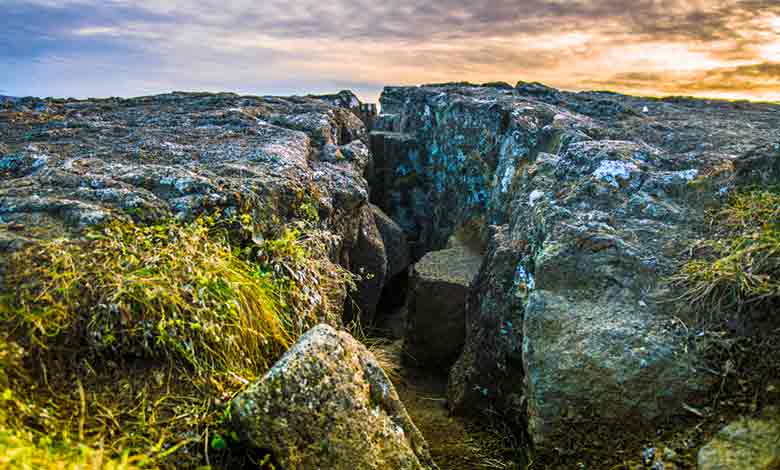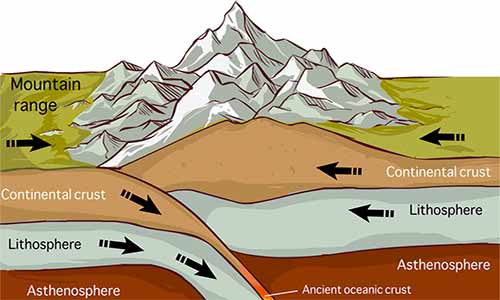
Over 20 million years, the Farallon and Caribbean Plates’ shifting produced the Central America Volcanic Arc. As these plates surfed the Earth’s magma layer far beneath the Pacific Ocean floor, the Caribbean Plate migrated eastward. About 15 million years ago, South America finally collided with this Central American Arc.
This gradually closed the water connection between the Pacific and the Caribbean, creating a land bridge that connected North America to South America. Terrestrial organisms could now cross between the two continents. From the fossil records, it’s evident that different waves of their dispersals took place. Even though plants don’t physically move, they are easily dispersed by wind and waves. So they migrated first, along with a few species of birds.
Some freshwater fishes and amphibians followed them. Finally, various mammals began to traverse the bridge. Mammals from South America, ground sloths, and glyptodonts were widely distributed in North America. Moreover, many South American tropical mammals, like monkeys and bats, colonized the forests of Central America and are very abundant today.
What happens when continents collide?
When two continental plates collide, it’s a slow but incredibly powerful process that dramatically alters Earth’s surface over millions of years. This process is known as a continental collision or orogeny, and it’s part of the larger cycle of plate tectonics, which describes the large-scale movement of Earth’s lithosphere. Here are the main stages and outcomes of a continental collision:
Subduction and Mountain Building: The collision starts when the oceanic crust gets subducted, or pulled under, a piece of continental crust. As the oceanic crust is forced deeper into the Earth, it melts and can create a chain of volcanic islands parallel to the continent’s edge (this process can be observed in the ‘Ring of Fire’ around the Pacific Ocean).
Eventually, the sea between the island arc and the continent may close, causing the two to collide. This collision crumples and folds the rock at the boundary, pushing it upward and leading to the formation of mountains. For example, The Himalayas were formed by the collision of the Indian and Eurasian plates.
Formation of Suture Zones: The place where two continental plates collide and are welded together is called a suture. Evidence of these ancient collisions can be found in the form of ophiolites, sections of the oceanic crust, and upper mantle that have been uplifted and exposed above sea level and are found in or near suture zones.
Seismic Activity: The collision of continents also results in a lot of seismic activity. Earthquakes are common in these areas due to the immense pressures and the movement of the Earth’s crust.
Metamorphism: The heat and pressure at the site of the collision cause changes to the rocks in what is known as metamorphism. This can lead to the formation of new types of rocks.
Plateau formation: In some cases, when the continental crust is thickened due to collision, it can also result in the formation of a high-altitude plateau, like the Tibetan Plateau near the Himalayas.
Almost all the Earth’s landmass was clumped into one gigantic supercontinent, Pangea. The land was like one tightly knit bunch. The crust and upper part of the molten mantle are called the lithosphere. These are broken into several tectonic plates that fit together like puzzle pieces. These plates glide around on the Earth’s molten interior, creating mountains and volcanoes where they collide.
The plates only move centimeters yearly, but sometimes dramatic events happen suddenly. For example, the giant crack that opened up in Africa. In March 2018, a huge crack appeared in Kenya. A few possible explanations exist, like heavy rain or underground water washing away sediment. But it’s also possible that Africa is splitting in two.
The same forces that cause the plates to move can also break them apart. The African plate is breaking up into unequal parts: the Somali and Nubian plates. Africa isn’t the only continent making a break for it. Australia is on the move too. The country is moving north so quickly that it could throw GPS systems off in a few years.
Two continental plates collide.
The Earth’s lithosphere is made up of dozens of tectonic plates. A complex network of moving pieces beneath the Earth that shape our continents. Churning currents within the molten rocks below slide the plates in slow motion. They move only one to two inches a year, which can cause them to crash together or rip apart.
These plate movements cause much of the geological activity around the globe. Earthquakes and volcanoes are all a result of the power of plate tectonics. Two continents connected as the Pacific and Caribbean plates moved towards each other, pushing up the seafloor.

A whole new chapter in the evolution of its inhabitants began. Here you see how life is closely related to plate tectonics and moving continents. Without the collision of these two continents, the animals would never have been connected. Animals like the armadillo, porcupine, and opossum only exist in North America because they crossed this ancient land bridge. Also, it’s the same reason that South America has its horses. Plate tectonics will continue to change how our world looks. The physical lands change, and the land’s inhabitants change as well.
South American predator marsupials went extinct 3 million years ago. At this point, North American predators, such as cats, bears, and foxes, migrated south and occupied the ecological space left behind. Horses, llamas, tapirs, cougars, saber-toothed cats, gomphotheres, and later humans headed south across the land bridge. But what happened on land is only half the story.
What had been one giant ocean was now two, creating differences in temperature and salinity for the two bodies of water. The isthmus also became a barrier for many marine organisms, like mollusks, crustaceans, foraminifera, bryozoans, and fish, and separated the populations of many marine species. It also allowed the thermohaline circulation, a global water conveyor belt. It transports warm water across the Atlantic and influences the East Coast of North America, the West Coast of Europe, and many other areas.
Effects of continent collision
According to Scotese’s estimates, it will smack into China, getting all up in its business and fusing within 65 million years. Meanwhile, the northern edge of Africa will have joined up with the southern edge of Europe, eliminating the mediterranean sea.
Around 100 million years, the Pacific Ocean will get bigger as the Americas drift towards Europe, but not before Alaska nicks a Russian piece. While all this is happening, Antarctica will begin drifting into the Indian Ocean. It will join Brazil and Madagascar at the southern tip of Africa while Newfoundland smooshes into the Ivory Coast. In 250 million years, we could look at a new supercontinent, Pangea Proxima.
Another one is North America crosses the arctic ocean to snuggle up to Russia, forming another supercontinent, Amasia. It’s poetic that the whole gang could get back together again. The cycle will continue until the Earth’s molten interior cools or something else causes the tectonic activity to stop.
In New Zealand, two tectonic plates collide. In the south, we have a trench. A trench means that one side, the Australian plate, goes down beneath the Pacific plate, about 200 kilometers deep. Along that plate boundary, there are many earthquakes. The plate collision is mostly taken up by movement across the Alpine Fault in the central South Island.
Much of the earthquake activity on the Alpine Fault is sideways movement and a little bit of upward movement. The upward movement is the thing that causes the very strong boundary between Westland and the high peaks of the Southern Alps. Away from the Alpine Fault, it is the main fault of the plate boundary. Many smaller faults, such as those that generated the devastating earthquakes in Canterbury.
In the North, the Alpine Fault breaks into a series known as the Marlborough Fault system. Most movement transitions onto the Hope Fault and heads towards this plate boundary to the north. The North Island situation is more or less the opposite of what’s occurring in Fiordland. The Pacific plate is now going down underneath the North Island, which is still part of this big Australian plate. It dives down to five and six hundred kilometers deep.
Also, the Master Fault is Subduction Fault, and the North Island’s broken into many smaller parts. So the earthquake activity is quite varied on the North Island. There is the possibility of massive earthquakes on the plate interface, on the East Coast North Island subduction zone. That could be similar to big earthquakes in Japan or Indonesia. Earthquakes are generally more minor on these faults. The Edgecumbe quake of 1987 is a typical example of the earthquakes that we expect to be associated with the volcanic zone.
More Articles:
What Is Physical Geography In Science?
Importance Of Natural Disasters
References:
Ernst, W.G., “Preservation/exhumation of ultrahigh-pressure subduction complexes”.
Ernst, W.G.; Maruyama, S. Wallis; Wallis, “Buoyancy-driven, rapid exhumation of ultrahigh-pressure metamorphosed continental crust.” Proceedings of the National Academy of Sciences. 94 (18): 9532–9537.
O’Brien, P.J. (2001). “Subduction followed by collision; Alpine and Himalayan examples.” Physics of the Earth and Planetary Interiors.
Toussaint, G.; “Tectonic evolution of a continental collision zone: A thermomechanical numerical model.”

